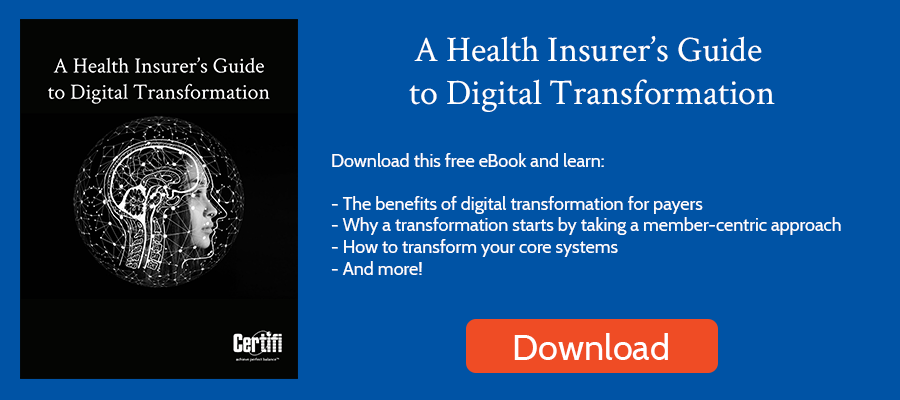With approximately 230 million subscribers, Netflix has become synonymous with streaming video. But what helped Netflix achieve its impressive growth and leading market share isn’t its innovative delivery model. It’s the organization’s data-driven culture.
Netflix uses data in every aspect of the business. There are obvious use cases, like providing personalized movie and TV recommendations and personalizing content like trailers and thumbnails to drive more interest. And less obvious ones, like predicting content popularity before even developing the content.
Health plans should take note. That focus on data can help organizations improve decision-making, be more efficient, improve the customer experience, and mitigate risks.
Here are five ways health insurance data analytics can improve business results:
Predictive Analytics
Like Netflix uses user data to predict the success of future content, health plans can leverage predictive analytics to forecast the future health needs of their members. By analyzing historical data, health plans can identify members at a high risk of developing certain conditions. Then, they can offer targeted interventions to prevent or manage these conditions.
For example, UnitedHealthCare uses predictive analytics to identify members who may need support related to social determinants of health, like meals, social groups, and financial assistance. The model uses claims data and can assess more than 100 metrics in more than 300 markets to identify those needing resources. After pinpointing members, UHC call center advocates contact members to provide targeted community resources. Using predictive analytics has meant eligible individuals have accepted more than 50% of offers for support.
Utilization Management
Health insurance data analytics can also be used to manage utilization, ensuring members receive appropriate care at the right time. By monitoring utilization patterns, health plans can identify trends and implement programs to address overutilization, underutilization, and inappropriate utilization of health care services.
A mid-sized employer wanted to improve employee productivity, so Kaiser examined utilization data. They discovered higher ER visit rates and lower clinical engagement rates for preventive care and COVID-19 vaccination rates. That led to targeted on-site education about preventative care and other ways to access healthcare services.
Disease Management
Health plans can use data to identify members with chronic conditions and develop personalized care plans to help manage their disease. By using data to track member progress and adjust care plans as needed, health plans can improve health outcomes and reduce costs.
For example, Kaiser Permanente leverages remote monitoring programs to collect data for those with chronic illnesses like diabetes. Care teams leverage that data to monitor and personalize programs for members with chronic diseases.
Provider Performance
Health plans can leverage data to evaluate the performance of their network providers. By analyzing provider performance data, health plans can identify areas for improvement and work with providers to implement quality improvement programs.
Blue Cross Blue Shield of Michigan uses data to help those
participating in its Blueprint for Affordability program. Providers use Blue Cross Blue Shield of Michigan data to uncover additional areas where they may find cost savings while still delivering desired patient outcomes.
Member Engagement
Health plans can use data to engage members and improve their health and well-being. By providing members with personalized health information and tools, health plans can encourage healthy behaviors and support members in achieving their health goals.
Tufts Health Plan uses data to determine which members to engage and how to interact with a member. For example, where someone lives may dictate the type of content Tufts sends a member. A diet and exercise plan may work for a rural member, but that plan may not be best for an urban member. Or, an older member may prefer office visits and phone calls, while a younger member may prefer telehealth visits and text reminders.
Health plans can leverage data to improve care quality, reduce costs, and improve member satisfaction.
Certifi’s health insurance premium billing and payment solutions help healthcare payers improve member satisfaction while reducing administrative costs.



